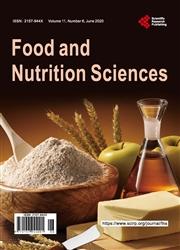Novel Gluten-Free Amaranth and Oat Flour Cookies Fortified with Soybean Hulls
引用次数: 0
Abstract
Soybean hulls, an abundant byproduct of soybean processing, contain rich phytochemicals, fibers, proteins, and minerals. Currently soybean hulls are primarily used as animal feeds. For value-added soybean hull utilization, 25% soybean hulls were substituted for amaranth or whole oat flour (WOF) in novel gluten-free cookies. Composition, nutritional values, water-holding capacities, correlation between properties, and pasting and rheological properties of soybean hulls, amaranth, and WOF were appraised in comparison to wheat flour. Water loss, cookie texture, and geometrical properties of the cookies were examined. The results disclosed that soybean hulls, amaranth and WOF contain higher protein content, minerals, fiber, special amino acids, and critical vitamins (C and K) than wheat flour. Considerably higher total amino acid content was found in soybean hulls (18.33%) than wheat flour (12.77%). Water-holding capacities increased by replacing amaranth and WOF with soybean hulls. Soybean hulls exhibited higher rheological elastic properties than amaranth, WOF and wheat flours. The soybean hulls utilized in amaranth or WOF cookies greatly improved their nutritional value, the water retention and moisture content along with acceptable physical properties when compared to wheat flour cookies. This study explored the feasibility and potential of utilizing soybean hulls with amaranth and WOF in gluten-free bakery products and other food applications用大豆壳强化的新型无麸质苋菜和燕麦面粉饼干
大豆皮是大豆加工过程中丰富的副产品,含有丰富的植物化学物质、纤维、蛋白质和矿物质。目前大豆皮主要用作动物饲料。在新型无谷蛋白饼干中,以25%的大豆皮代替苋菜粉或全麦粉,实现了大豆皮的增值利用。与小麦粉比较,评价了大豆皮、苋菜皮和WOF的组成、营养价值、持水性、性能之间的相关性以及糊化和流变性能。测试了饼干的失水、质地和几何特性。结果表明,与小麦粉相比,大豆皮、苋菜皮和WOF含有更高的蛋白质、矿物质、纤维、特殊氨基酸和关键维生素(C和K)。大豆皮总氨基酸含量(18.33%)显著高于小麦粉(12.77%)。用大豆皮代替苋菜和WOF提高了持水能力。大豆皮的流变弹性优于苋菜粉、WOF粉和小麦粉。与小麦粉曲奇相比,苋菜或WOF曲奇中使用的大豆皮大大提高了其营养价值、保水率和含水率,并具有可接受的物理性能。本研究探讨了大豆皮、苋菜皮和黄菜籽油在无麸质烘焙食品和其他食品中的应用的可行性和潜力
本文章由计算机程序翻译,如有差异,请以英文原文为准。
求助全文
约1分钟内获得全文
求助全文

 求助内容:
求助内容: 应助结果提醒方式:
应助结果提醒方式:


